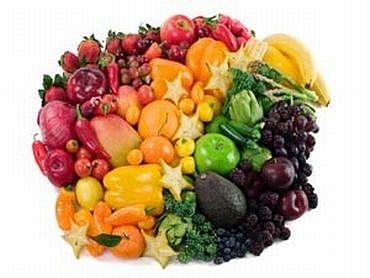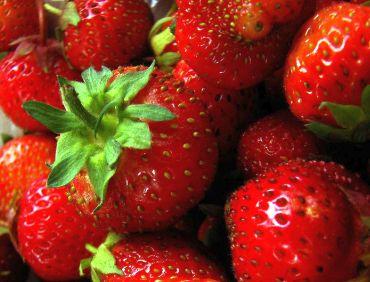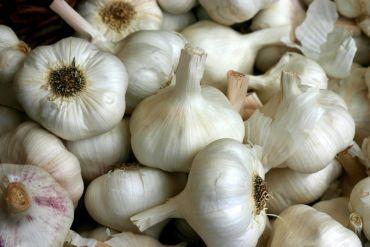
What does the colour of a fruit or vegetable tell you about its nutritional value and why is it important to incorporate all of them into your diet?
All of us know that eating at least five servings of fruit and vegetables a day is very important. They are excellent foods to prevent heart disease and strokes, control your blood pressure, reduce the risk of some types of cancer and guard against cataract and macular degeneration or vision loss. But the latest advice from nutrition experts is to include a vast spectrum of colourful fruit and vegetables in your diet for maximum gain.
Fruits and vegetables are very important to our health because they are whole foods, created by nature, that are rich in a large amount of nutrients. But lately, scientists have been researching compounds and phytochemicals that give fruit and vegetables their colour. We reveal to you what their research says in the following pages, so read on to learn more.

Nutrition
Red fruit and vegetables are a common host to the phytonutrients lycopene and anthocyanins -- natural plant pigments responsible for their red colour.
Lycopene (present in tomatoes, pink guava and watermelon) has been shown to have anti-aging and cancer-protecting properties (especially prostate cancer).
Cooked tomato products such as pasteurised tomato juice, soup, sauce and ketchup contain the highest concentrations of bioavailable (easily absorbable by body) lycopene from tomato-based sources. As lycopene is fat-soluble, serving foods rich in this phytonutrient in small amounts of oil allows it to be better absorbed than lycopene from raw tomatoes.
Anthocyanin (present in strawberries, red grapes, raspberries, cherries and red apple) is a good antioxidant that protects cells from damage. It is also helpful in reducing the risk of heart disease and keeping your blood pressure under control. Recent studies indicate that anthocyanins present in cherries have anti-inflammatory properties and may be useful for people who suffer from gout or other forms of arthritic inflammation.
Foods
Tomatoes, cranberries, cherries, red grapes, raspberries, red pears, watermelon, pink grapefruit, strawberries, pomegranates (anaar) etc.

Nutrition
Blue/purple fruit and vegetables contain phytochemicals such as anthocyanins (present in blueberries, purple grapes and black currant) and phenolics (present in eggplant, plums and raisins). These are powerful antioxidants that help reduce the risk of diseases including cancer, heart disease, and Alzheimer's, and may even slow down the aging process.
Research suggests that eating blueberries, in particular, may help with memory functions and prevent aging by improving cell communication within the nervous system.
Foods
Purple cabbage, blueberries, backberries, eggplant, purple figs, purple grapes, dried plums, raisins etc.

Nutrition
The green colour of fruit and vegetables is due to the presence of the pigment chlorophyll. Lutein and Zeaxanthin are two yellow-coloured carotenoids present in peas, spinach and other dark leafy greens. They both work together to keep your eyes healthy by reducing the risk of cataract and age-related macular degeneration.
Indoles are other phytochemicals present in cabbage, broccoli and other cruciferous vegetables that may help protect against some types of cancer. Leafy green vegetables such as spinach and broccoli are also low in calories, high in dietary fibre and excellent sources of potassium, magnesium and folate (a B vitamin that helps reduce the risk of birth defects).
Foods
Spinach, broccoli, avocado, green peas, green beans, green peppers, asparagus, green cabbage, cucumber, zucchini etc.

Nutrition
Orange/yellow fruit and vegetables contain several essential phytonutrients such as beta-carotene, potassium and Vitamin C. Beta-carotene (present in carrots, mangoes, papaya and pumpkins) is a powerful antioxidant which is not only good for eye health, but can also delay cognitive aging and protect skin from sun damage. Beta-carotene is converted to Vitamin A, which is important for night vision and is crucial to the health of the immune system.
Citrus fruits like oranges are an excellent source of Vitamin C, an antioxidant which boosts the immune system, protects against cardiovascular disease and helps rebuild collagen in the skin. Vitamin C also helps support the body's iron absorption. Yellow fruit are rich in the mineral potassium, which is beneficial for preventing stroke and coronary heart disease.
Foods
Oranges, carrots, cantaloupes, mangoes, pumpkin, sweet potatoes, yellow grapefruit, lemon, peaches, papaya, pineapple etc.

Nutrition
The white colour found in fruit and vegetables is due to phytochemicals called anthoxanthins -- flavonoids which exhibit antioxidant properties. White produce such as garlic and onions contain allicin, which may help lower cholesterol and blood pressure. Allicin has also been shown to reduce the risk of prostate cancer.
White fruit and vegetables contain nutrients that help provide powerful immune-boosting activity and are good sources of the mineral potassium too.
Foods
Garlic, onions, banana, mushrooms, potatoes and cauliflower.
An overall balanced diet should consist of foods of all colours. Keeping in mind colour and portions can lead to a better, overall healthy way of eating for you. So from the next meal on, make sure your plate looks like a rainbow.